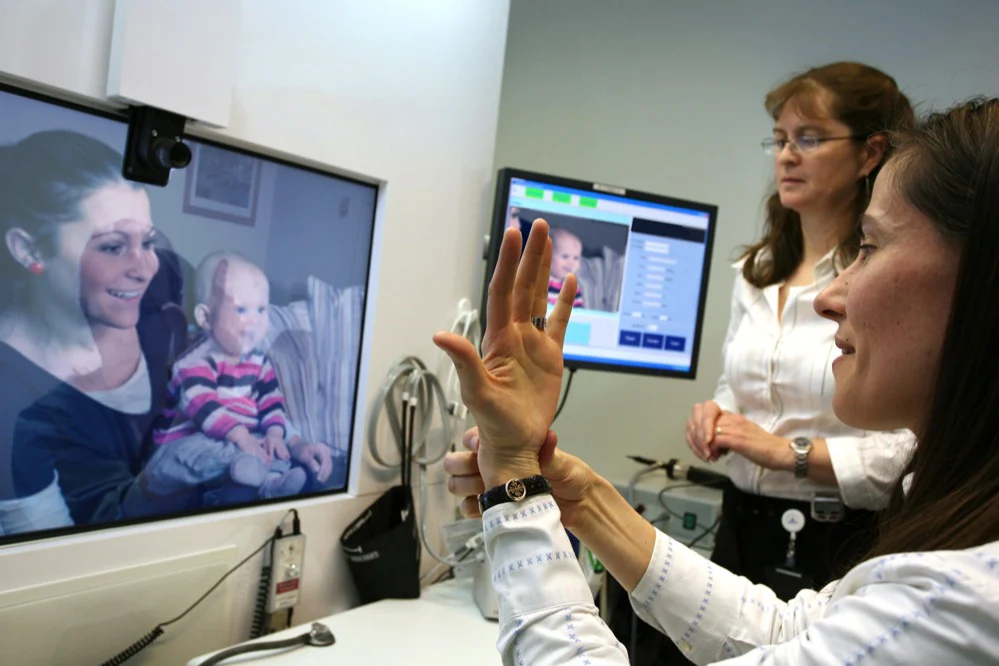In today’s digital age, telemedicine has emerged as a powerful tool revolutionizing healthcare delivery. By connecting patients and healthcare providers through technology, telemedicine breaks down geographical barriers and offers convenient, accessible care options. This comprehensive guide explores how virtual healthcare is reshaping medical practice, improving patient outcomes, and addressing healthcare disparities across communities.
What Is Telemedicine? Understanding the Digital Healthcare Approach
Telemedicine refers to the remote delivery of healthcare services using telecommunications technology. Rather than requiring in-person visits, telemedicine enables healthcare professionals to evaluate, diagnose, and treat patients through secure video calls, phone consultations, and digital messaging platforms. This approach encompasses various services from routine check-ups and chronic disease management to mental health counseling and specialist consultations.
The core technologies powering telemedicine include:
- Video conferencing platforms: Secure, HIPAA-compliant systems enabling face-to-face virtual consultations
- Remote monitoring devices: Tools that collect and transmit patient health data to providers
- Mobile health applications: Apps facilitating appointment scheduling, medication reminders, and health tracking
- Electronic health records (EHRs): Digital systems storing and sharing patient information securely
Telemedicine serves as a complement to traditional healthcare while addressing many of its constraints and inefficiencies.
The Evolution of Telemedicine: From Experimental Technology to Mainstream Care
Telemedicine’s origins trace back further than many realize. The concept of remote healthcare delivery began taking shape in the early 20th century with radio consultations for ships at sea and remote communities. The timeline of telemedicine development shows how this practice evolved from a niche solution to an integral part of modern healthcare:
- 1950s-1960s: Early experiments with closed-circuit television systems to transmit radiological images and provide psychiatric consultations
- 1970s-1980s: NASA and military organizations developed remote monitoring technologies for astronauts and deployed personnel
- 1990s-2000s: The internet revolution enabled more sophisticated telehealth applications and early electronic health record systems
- 2010-2019: Smartphone proliferation, improved broadband access, and healthcare policy changes drove steady growth in telemedicine adoption
- 2020-Present: The COVID-19 pandemic catalyzed explosive growth and mainstream acceptance of virtual care, with regulatory barriers rapidly decreasing
What began as a technological experiment has transformed into an essential component of healthcare delivery systems worldwide, with adoption rates continuing to accelerate across medical specialties.
Key Benefits of Telemedicine: Why Virtual Healthcare Is Gaining Momentum
The rapid adoption of telemedicine stems from its numerous advantages for patients, providers, and healthcare systems:
For Patients:
- Improved access to care: Residents of rural and underserved areas can connect with specialists previously unavailable to them
- Reduced travel burden: Eliminating transportation challenges, particularly beneficial for elderly, disabled, or chronically ill patients
- Time efficiency: Decreased waiting times and elimination of commuting saves valuable time
- Lower costs: Fewer transportation expenses, reduced time away from work, and often lower co-pays
- Continuity of care: More frequent check-ins and easier follow-up appointments
- Privacy benefits: Some patients feel more comfortable discussing sensitive health issues remotely
For Healthcare Providers:
- Expanded patient reach: Ability to serve patients beyond traditional geographic boundaries
- Increased efficiency: More patients seen per day with reduced no-show rates
- Enhanced work flexibility: Options for remote work and more balanced schedules
- Revenue opportunities: New patient acquisition and visit types
- Reduced overhead costs: Less physical office space and staffing requirements for virtual visits
These benefits explain why 76% of hospitals in the United States now connect with patients through video and other technology, according to the American Hospital Association.
Telemedicine Implementation Challenges: Overcoming Technical and Regulatory Hurdles
Despite its benefits, telemedicine faces several significant implementation challenges:
Technical Barriers
- Digital divide: Approximately 19 million Americans still lack reliable internet access, creating disparities in who can benefit from telemedicine
- Technology literacy gaps: Some patients, particularly older adults, may struggle with virtual platforms
- Integration complexities: Many healthcare systems face difficulties integrating telemedicine solutions with existing electronic health records
Regulatory Considerations
- Licensure limitations: Many practitioners must navigate complex multi-state licensing requirements to practice telemedicine across state lines
- Reimbursement uncertainties: Insurance coverage and payment parity for virtual visits vary significantly by state and insurer
- Privacy concerns: Ensuring HIPAA compliance and data security across virtual platforms
Clinical Limitations
- Physical examination constraints: Certain conditions require hands-on assessment that cannot be fully replicated virtually
- Diagnostic accuracy concerns: Some providers worry about missing subtle clinical findings during virtual examinations
- Treatment limitations: Procedures and certain therapies still require in-person care
Addressing these challenges requires multi-stakeholder collaboration between technology developers, healthcare organizations, policymakers, and patient advocates.
Telemedicine’s Impact on Healthcare Access: Bridging Geographic and Socioeconomic Divides
One of telemedicine’s most significant contributions is its ability to expand healthcare access across geographic and socioeconomic boundaries:

Serving Rural Communities
Rural Americans face substantial healthcare barriers, living on average 10.5 miles from the nearest hospital compared to 5.6 miles for urban residents. Telemedicine helps bridge this gap by:
- Connecting rural patients with specialists without requiring hours of travel
- Enabling local providers to consult with specialists on complex cases
- Supporting rural hospitals and clinics with additional service offerings
Supporting Underserved Urban Areas
Urban healthcare deserts also benefit from telemedicine through:
- Virtual urgent care options reducing emergency department overcrowding
- Increased access to mental health services in underserved neighborhoods
- Multilingual telehealth services addressing language barriers
Addressing Provider Shortages
With projections showing a shortage of up to 124,000 physicians by 2034, telemedicine helps maximize existing provider capacity by:
- Allowing specialists to serve patients across wider geographic areas
- Enabling more efficient distribution of provider time and resources
- Supporting team-based care models with virtual specialist input
When implemented thoughtfully, telemedicine can serve as a powerful tool for addressing healthcare disparities and improving access for historically underserved populations.
Patient Outcomes and Telemedicine: Evidence of Clinical Effectiveness
Growing research demonstrates telemedicine’s positive impact on patient outcomes across multiple conditions and specialties:
Chronic Disease Management
- Diabetes: Studies show telemedicine programs achieving A1C reductions of 0.31% compared to traditional care, with improved medication adherence
- Hypertension: Remote monitoring programs have demonstrated systolic blood pressure reductions of 3.26 mmHg on average
- Heart failure: Telemonitoring reduces hospital readmissions by approximately 25% in some studies
Mental Health Care
- Depression: Meta-analyses show virtual cognitive behavioral therapy achieving outcomes comparable to in-person treatment
- Anxiety disorders: Telemedicine interventions demonstrate effectiveness rates similar to traditional therapy
- Medication management: Virtual psychiatric care shows medication adherence rates equal to or better than in-person care
Post-Surgical Care
- Reduced readmissions: Telemedicine follow-ups have shown 40-50% reductions in post-surgical readmissions for certain procedures
- Complication detection: Early identification of post-operative complications through virtual check-ins
- Patient satisfaction: Higher patient satisfaction scores for recovery supported by telemedicine options
This growing body of evidence supports telemedicine as a clinically effective approach for many common conditions when implemented appropriately.
Telemedicine Best Practices: Maximizing Virtual Care Quality and Effectiveness
Healthcare organizations can optimize telemedicine outcomes by following established best practices:
For Healthcare Organizations
- Thorough platform vetting: Select HIPAA-compliant platforms with intuitive interfaces for both providers and patients
- Staff training: Comprehensive training on technology use, virtual examination techniques, and telehealth etiquette
- Workflow integration: Seamlessly incorporate telemedicine into existing scheduling and EHR systems
- Technical support: Dedicated support for both providers and patients navigating virtual care
- Quality monitoring: Regular assessment of virtual care quality metrics and patient satisfaction
For Healthcare Providers
- Environment preparation: Conduct visits from quiet, professional-appearing spaces with good lighting
- Modified examination techniques: Develop strategies for thorough assessment within virtual constraints
- Enhanced communication: Practice clear, engaging communication that compensates for reduced nonverbal cues
- Documentation precision: Maintain detailed notes specifying the virtual nature of the encounter
- Appropriate triage: Develop clear guidelines for which conditions require in-person evaluation
For Patients
- Pre-visit technology testing: Check device compatibility and connectivity before appointments
- Preparation checklist: Gather relevant health information, medication lists, and questions
- Environment considerations: Find a private, well-lit space free from distractions
- Measurement tools: Have relevant home monitoring equipment available (thermometers, blood pressure cuffs, etc.)
Following these guidelines helps ensure both providers and patients receive maximum benefit from virtual healthcare interactions.
The Future of Telemedicine: Innovations Reshaping Healthcare Delivery
Telemedicine continues to evolve rapidly, with several emerging trends poised to further transform healthcare delivery:
Artificial Intelligence Integration
- Automated triage: AI-powered symptom checkers directing patients to appropriate care levels
- Diagnostic assistance: Systems helping providers identify potential diagnoses based on patient data
- Predictive analytics: Algorithms identifying patients at risk for deterioration or readmission
Advanced Remote Monitoring
- Wearable technology: Continuous monitoring devices transmitting real-time health data
- Smart home integration: Health monitoring embedded within home environments
- Medication adherence tools: Connected pill dispensers and digital reminders improving treatment compliance
Hybrid Care Models
- Virtual-first healthcare plans: Insurance designs prioritizing virtual care as the entry point
- Hospital at home: Advanced care delivery in home settings supported by telemedicine
- Specialty care partnerships: Hub-and-spoke models connecting community providers with specialist teams
Augmented and Virtual Reality Applications
- Immersive therapy: VR-based treatments for pain management, phobias, and PTSD
- Enhanced visualization: AR tools improving provider understanding of complex anatomy
- Rehabilitation monitoring: Virtual platforms tracking patient progress through recovery exercises
These innovations promise to expand telemedicine’s scope and effectiveness while creating new opportunities for personalized, accessible healthcare.
Telemedicine Policy Landscape: Navigating Regulatory Considerations
The regulatory environment significantly impacts telemedicine implementation and sustainability:
Current Policy Framework
- State licensing requirements: Most states require providers to be licensed where the patient is located
- Reimbursement policies: Coverage varies by state, insurer, and service type
- Practice standards: State medical boards establish telemedicine practice guidelines
- HIPAA requirements: Privacy and security regulations apply to virtual care platforms
Policy Changes During COVID-19
- Temporary waivers: Many licensing restrictions and reimbursement limitations were suspended
- Expanded Medicare coverage: CMS significantly broadened covered telemedicine services
- Relaxed platform requirements: Temporary allowances for non-HIPAA compliant communication tools
- Prescribing flexibility: Adjusted regulations for controlled substance prescribing via telemedicine
Post-Pandemic Policy Evolution
- Permanence evaluation: Policymakers assessing which temporary changes should become permanent
- Payment parity debates: Ongoing discussions about whether virtual visits should be reimbursed at the same rate as in-person care
- Interstate practice solutions: Development of interstate compacts and license portability solutions
- Quality measurement: Creation of telehealth-specific quality metrics and standards
Healthcare organizations must stay informed about this evolving landscape while advocating for policies supporting high-quality virtual care.
How to Implement Telemedicine: A Guide for Healthcare Organizations
Healthcare organizations considering telemedicine implementation should follow these key steps:
Assessment and Planning
- Needs assessment: Identify which services and patient populations would benefit most
- Technology evaluation: Review available platforms against organizational requirements
- Staff readiness assessment: Gauge provider interest and technology comfort levels
- Financial modeling: Calculate implementation costs and potential ROI
Implementation Strategy
- Pilot program design: Start with limited scope before wider deployment
- Provider training: Develop comprehensive education on technology and virtual care best practices
- Workflow redesign: Adapt scheduling, documentation, and billing processes
- Patient education: Create clear materials explaining how to access and use virtual services
Optimization and Evaluation
- Continuous feedback collection: Gather provider and patient input regularly
- Quality monitoring: Track clinical outcomes, patient satisfaction, and technical performance
- Service expansion: Gradually increase telemedicine offerings based on success metrics
- Integration enhancement: Deepen connections between telemedicine and other care systems
Organizations that approach implementation methodically typically achieve more sustainable telemedicine programs with better outcomes.
Patient Guide to Telemedicine: Making the Most of Virtual Healthcare
Patients can optimize their telemedicine experience by following these recommendations:
Preparing for Your Telemedicine Visit
- Verify insurance coverage: Confirm your plan covers telemedicine services
- Technology check: Test your device and internet connection in advance
- Information gathering: Prepare a symptom list, medication information, and questions
- Vital sign measurements: If possible, measure temperature, weight, blood pressure or other relevant metrics
- Environment setup: Choose a quiet, private, well-lit location for your appointment
During Your Virtual Appointment
- Communication tips: Speak clearly, avoid interrupting, and ask for clarification when needed
- Physical examination assistance: Be prepared to show affected areas, demonstrate range of motion, or perform basic self-examination steps
- Note-taking: Record key instructions and recommendations
- Question asking: Don’t hesitate to address concerns about virtual care limitations
After Your Appointment
- Follow-up planning: Understand next steps, including any needed in-person care
- Prescription coordination: Know how medications will be prescribed and filled
- Technical feedback: Report any connectivity or usability issues for future improvement
- Care continuity: Request that visit information be shared with your primary care provider
Following these guidelines helps ensure patients receive maximum benefit from virtual healthcare services.
Telemedicine Across Medical Specialties: Applications Beyond Primary Care
While primary care represents a significant portion of telemedicine usage, virtual care has proven valuable across numerous specialties:

Mental Health Services
Telepsychiatry and teletherapy have shown particularly strong outcomes, with:
- Comparable effectiveness to in-person treatment for many conditions
- Reduced stigma through private access from home
- Higher appointment completion rates than traditional care
Dermatology
Teledermatology enables effective evaluation of many skin conditions through:
- High-resolution image sharing
- Video examination of skin concerns
- Asynchronous review by specialists
Cardiology
Virtual cardiac care supports:
- Remote monitoring of heart rhythm and blood pressure
- Medication management for heart conditions
- Post-procedure follow-up visits
Neurology
Teleneurology applications include:
- Stroke assessment and triage
- Headache and seizure disorder management
- Movement disorder evaluation
Endocrinology
Virtual diabetes and hormone management benefits from:
- Remote glucose monitoring integration
- Medication adjustment based on home readings
- Nutrition and lifestyle counseling
Each specialty continues to develop protocols optimizing virtual care for their unique patient populations and clinical needs.
Frequently Asked Questions About Telemedicine

Q: Is telemedicine as effective as in-person medical care?
Research shows telemedicine is equally effective for many conditions, particularly chronic disease management, mental health treatment, and follow-up care. However, certain situations still require in-person evaluation, especially for initial diagnosis of complex conditions or when physical examination is crucial. Your provider can help determine which visits are appropriate for virtual care.
Q: Will my insurance cover telemedicine services?
Most private insurers now cover some telemedicine services, though coverage varies by plan. Medicare has significantly expanded telemedicine coverage, especially since the COVID-19 pandemic. Check with your specific insurance provider about which virtual services are covered, applicable copays, and any network restrictions.
Q: What equipment do I need for a telemedicine appointment?
Basic telemedicine requires a device with internet access, a camera, and a microphone. This could be a smartphone, tablet, or computer. Some conditions may benefit from home monitoring devices like blood pressure cuffs, thermometers, or pulse oximeters. Your healthcare provider can advise which tools would be helpful for your specific situation.
Q: How is my privacy protected during telemedicine visits?
Healthcare providers must use platforms that comply with HIPAA (Health Insurance Portability and Accountability Act) privacy regulations. These platforms feature encryption, secure data storage, and controlled access. Additionally, providers are trained to conduct visits in private settings. You can enhance privacy by finding a quiet, private location for your appointment.
Q: Can doctors prescribe medications through telemedicine?
Yes, providers can prescribe many medications during telemedicine visits. The prescription will be sent electronically to your pharmacy. However, there are some restrictions on controlled substances, though these have been temporarily relaxed during the COVID-19 public health emergency. Some states have specific regulations limiting certain prescriptions via telemedicine.
Q: How do I know if my health concern is appropriate for telemedicine?
Many conditions can be effectively addressed through telemedicine, including minor illnesses, chronic disease management, medication reviews, and mental health concerns. However, emergency situations (chest pain, severe bleeding, difficulty breathing) always require immediate in-person care. Many providers offer pre-visit screening to help determine if your concern is suitable for virtual care.
Q: What happens if the doctor determines I need to be seen in person?
If your provider determines you need an in-person evaluation during a telemedicine visit, they will help coordinate appropriate next steps. This might include scheduling an in-person appointment, referring you to a specialist, or in urgent situations, directing you to an emergency department or urgent care facility.
Conclusion: Telemedicine’s Evolving Role in Healthcare’s Future
Telemedicine has evolved from a convenient alternative to an essential component of modern healthcare delivery. Its ability to expand access, improve outcomes, and enhance patient experience positions virtual care as a permanent fixture in tomorrow’s healthcare landscape.
As technology continues advancing and regulatory frameworks evolve, telemedicine will likely become increasingly integrated with traditional care models. The most successful healthcare systems will be those that thoughtfully blend virtual and in-person services, leveraging each approach’s strengths to create comprehensive, accessible care experiences.
For patients, providers, and healthcare organizations alike, understanding and embracing telemedicine’s capabilities represents an important step toward more equitable, efficient, and effective healthcare delivery. As virtual care continues to mature, its positive impact on healthcare access and patient outcomes will only grow stronger.
ALSO READ MORE HEALTH ARTICLES FROM CHIID HEALTH






